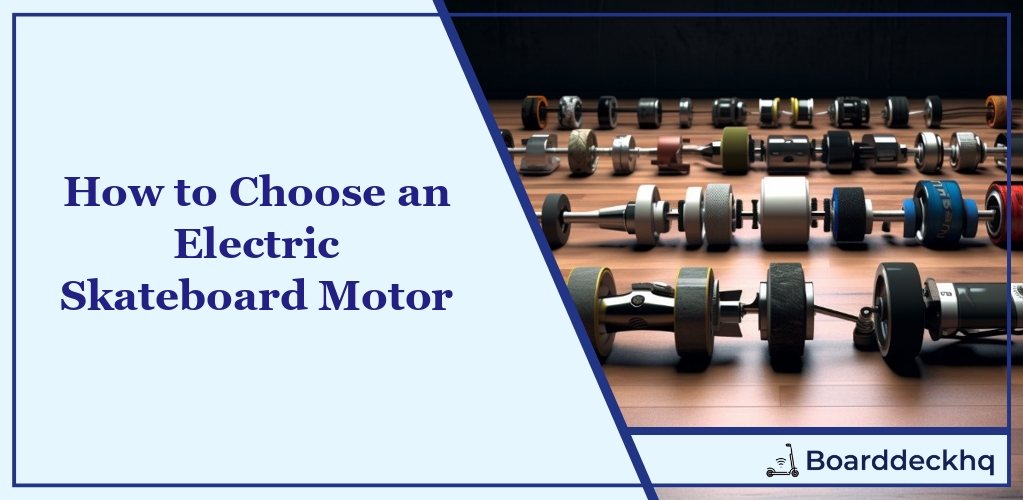Skating into the world of electric skateboards can be exhilarating but, before you kick-start your journey, it’s essential to understand one of the most crucial components – the motor. After all, it’s the powerhouse that propels you forward. But how do you choose the perfect motor that aligns with your riding style and needs? By understanding key specifications, distinguishing between different types, and weighing the pros and cons, you can make an informed decision. It’s about getting the thrill without compromising on safety or performance. Ready to dive into the nitty-gritty of electric skateboard motors?
What we’ll cover
- Electric Skateboard Motors Demystified
- Crucial Motor Specifications
- Various Electric Skateboard Motor Types
- Advantages and Disadvantages of Motor Types
- Choosing a Motor: Key Factors
- Must-have E-Skateboard Motor Features
- Other Important Considerations
Let’s roll into the specifics and help you choose a motor that will make your electric skateboard experience truly electrifying!
Understanding Electric Skateboard Motors
Electric skateboards, or e-skateboards as they are fondly called, are powered by compact but potent motors that provide the propulsion necessary to cruise through city streets or tackle off-road terrains. The key to choosing the right electric skateboard motor lies in understanding the fundamental principles behind these powerhouses and knowing the differences between the types of motors available.
One thing I quickly learned when I started my journey into the world of e-skateboards was that not all motors are created equal. The type of motor you choose can significantly impact your board’s performance, including its speed, torque, and overall ride feel.

Outrunner Motors
Let’s kick off with outrunner motors. These motors are called “outrunners” because the outer shell or ‘can’ rotates around the stator (the stationary part of the motor). The outrunner motor is typically used in electric skateboards due to its high torque output and efficiency at lower speeds.
Remember that day when I was trying out an electric skateboard fitted with an outrunner motor? I was instantly impressed by how effortlessly it climbed steep hills and how smoothly it handled low-speed cruising. It’s clear to see why outrunner motors have become a favorite among many e-skateboard enthusiasts.
Hub Drive Motors
Next up, we have hub motors, also known as in-wheel motors. Hub motors are built directly into the wheels of the skateboard, offering a sleek, compact design that reduces the board’s overall weight. This makes the e-skateboard easier to carry around when you’re not riding it.
I’ve found that boards with hub motors offer a more authentic skateboarding feel because they allow for free wheeling when not under power. However, the trade-off is that they generally provide less torque than outrunner motors, making them less effective for tackling steep hills or off-road terrains.
Direct Drive Motors
Direct drive motors, as the name suggests, connect the motor directly to the wheels without the need for belts or gears. This type of electric skateboard motor offers a great balance between the smooth ride feel of hub motors and the high-torque performance of outrunner motors.
I remember the first time I tried an e-skateboard with a direct drive system. The ride was impressively smooth and quiet, and it had plenty of power to handle hills and rough terrains. If you’re after a well-rounded ride experience, a direct drive motor could be just what you need.
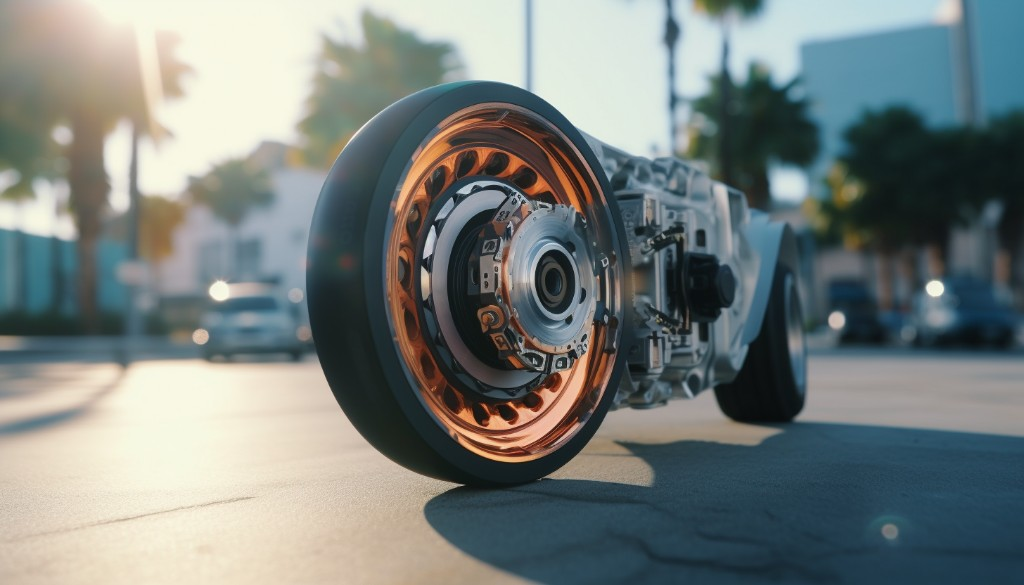
Belt Drive Motors
Lastly, let’s talk about belt drive motors. These motors use a belt and pulley system to transfer power from the motor to the wheels. Belt drive systems are known for their high torque output, making them excellent for hill climbing and off-road riding.
When I first rode an electric skateboard with a belt drive system, I was blown away by its acceleration and power. But I also noticed that it required more maintenance than other types of motors due to the wear and tear on the belts. If you’re okay with a bit of extra maintenance work, a belt drive motor could be your perfect match.
By understanding these motor types, you’re well on your way to choosing the right motor for your electric skateboard. The next step is to delve into the key specifications of these motors, which we’ll cover in the following section.
Key Motor Specifications to Consider
In my quest to find the perfect electric skateboard motor, I discovered a handful of crucial specifications that drastically affect the board’s performance and efficiency. Let’s delve into these in more detail.
Size of the Motor
The size of the motor is a vital consideration that can make or break your e-skateboarding experience. The motor size directly influences the power output and torque of your electric skateboard motor. For instance, a larger motor generally produces more torque, leading to higher acceleration and better uphill performance.
However, a larger motor size also comes with additional weight, potentially reducing your board’s top speed and maneuverability. It’s a delicate balance you need to strike based on your riding style and requirements. In my experience, opting for a medium-sized motor strikes a good balance between power, speed, and agility.
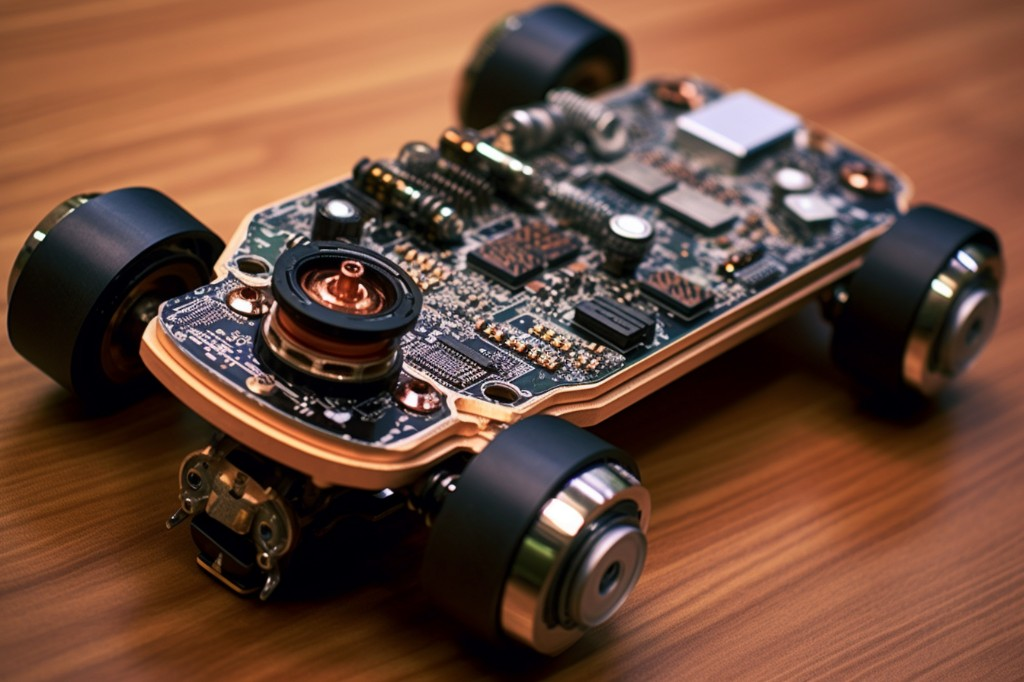
KV Ratings
Let’s move onto another essential specification – the KV ratings. Simply put, KV ratings refer to the number of revolutions per minute (RPM) that a motor will turn when 1 volt (without load) is applied. When choosing a motor for an electric skateboard, understanding KV ratings is essential because they directly influence your board’s top speed and torque.
Lower KV motors offer more torque, making them perfect for hill climbing or heavier riders. On the flip side, higher KV motors deliver higher speeds but at the cost of torque. So, if you’re like me and love to zip through city streets at high speeds, a high KV motor would be your best bet.
Motor Power in Watts
The next critical factor is the motor power, often measured in watts. The wattage of your skateboard motor is essentially its horsepower, indicating how powerful it is. A higher wattage translates to more power, resulting in higher speeds and better uphill performance.
However, keep in mind that a higher-powered motor also drains your battery faster. I learned this the hard way when my high-powered board ran out of juice halfway through a long ride. So, it’s essential to consider your riding needs and balance them with your board’s battery life.
In essence, choosing the right motor for an electric skateboard involves a careful consideration of these key specifications. It’s a juggling act between motor size, KV ratings, and power wattage, all of which need to align with your specific e-skateboarding needs and preferences.
Types of Electric Skateboard Motors
When it comes to selecting an electric skateboard motor, the variety of options can be quite overwhelming. It’s like walking into a candy store, with an array of colorful treats each offering a unique flavor and texture. You’ve got dual motors, single motors, hub motors, and belt drive motors, each with their distinct advantages and applications. So let’s dive into this world of electric skateboard motors and explore what each type brings to the table.
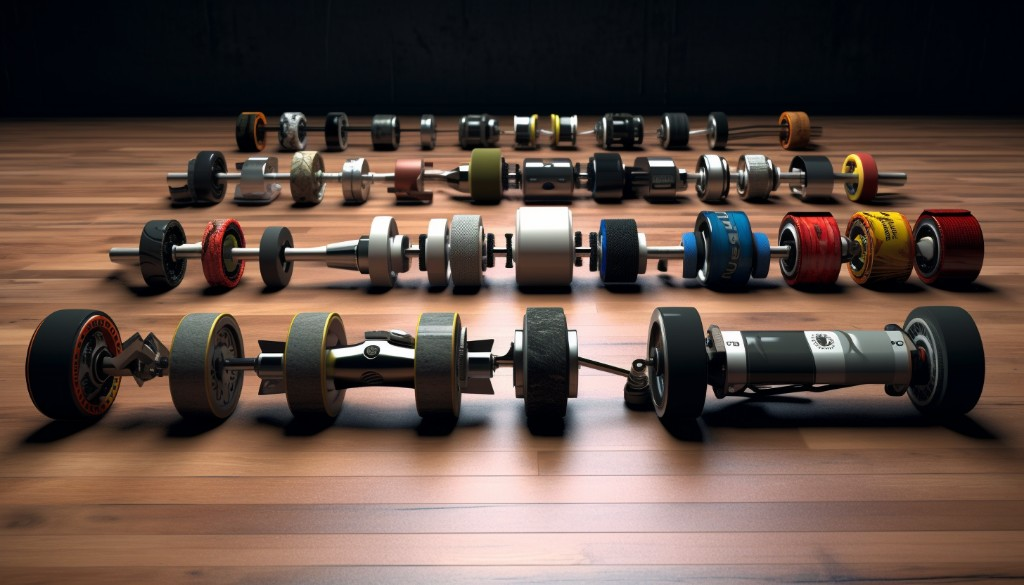
Dual Motors vs Single Motors
The debate between dual motor and single motor setups is much like comparing a sports car with a standard sedan. Both have their pros and cons, and the choice ultimately depends on your personal preferences and riding conditions.
A dual motor setup, as the name suggests, features two skateboard motors that work in tandem to provide a powerful riding experience. Imagine having two horses pulling your chariot instead of one. That’s the kind of power we’re talking about. This setup offers enhanced traction, faster acceleration, and improved hill-climbing capabilities. However, the downside is that it consumes more battery power, which could shorten your ride duration.
On the other hand, a single motor setup has one motor propelling your e-skateboard. It’s akin to having one reliable horse pulling your chariot. This setup is more energy-efficient and can extend your ride time due to less battery consumption. However, it might struggle with steep inclines and might not offer the same level of acceleration as a dual motor setup.
Double Rear Hub Motor
Now let’s talk about hub motors. The double rear hub motor setup is like a pair of hidden powerhouses that pack a punch without making much noise. These motors are built directly into the wheels of your skateboard, making them less visible and adding a sleek look to your ride.
One of the key benefits of hub motors is their stealth operation. They’re quiet, smooth, and produce less vibration compared to other motor types. They’re also relatively low-maintenance due to fewer moving parts, which can be a significant advantage for riders who prefer a more carefree riding experience.
However, hub motors have a few downsides as well. They might not offer the same level of torque as belt drive motors, which could affect your hill-climbing performance. Also, since the motors are integrated into the wheels, you might feel more road vibrations during your ride.
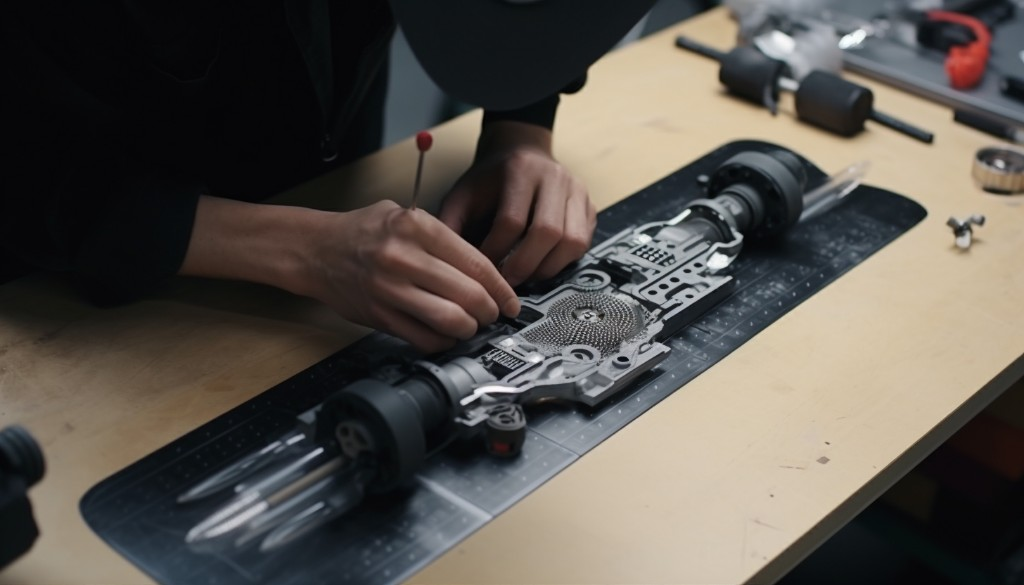
Double Belt Drive Motor
Lastly, let’s delve into the world of double belt drive motors. Think of these motors as the workhorses of electric skateboards. They’re robust, powerful, and can handle tough terrains with ease.
Belt drive motors operate by connecting the motor and the wheel via a belt and pulley system. This setup offers superior torque, making it ideal for tackling steep hills and providing fast acceleration. The belt drive system also allows for easy wheel customization, giving you the freedom to switch wheels based on your riding conditions.
However, belt drive motors come with their set of challenges. They require regular maintenance to ensure the belts are in good condition. They’re also a bit noisy compared to hub motors, which might be a concern if you prefer a quieter ride.
Choosing the right motor for your electric skateboard is like selecting the perfect pair of shoes. It needs to fit your style, comfort, and performance requirements. So whether you go for a dual motor or a single motor, a hub motor or a belt drive motor, remember that the best choice is the one that aligns with your personal riding needs and preferences.
Pros and Cons of Different Motor Types
Electric skateboards, or e-skateboards, come with different types of motors, each with its unique set of pros and cons. The type of motor you choose can significantly affect the performance, durability, and maintenance needs of your board. Let’s dive into the details of direct drive, belt drive, and hub motor systems.
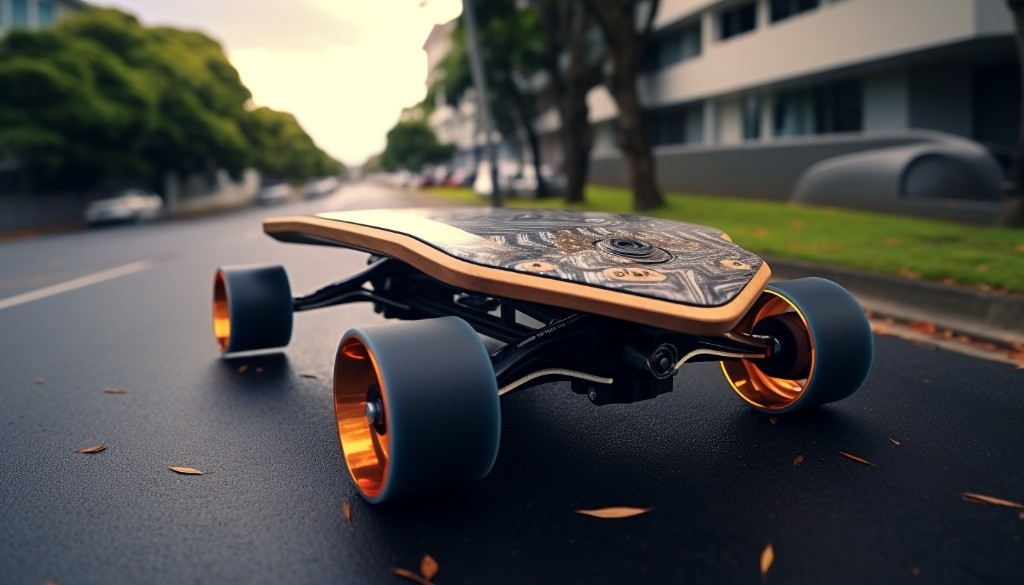
Advantages and Disadvantages of Hub Drive Motors
Hub motors are integrated directly into the skateboard’s wheels. This makes for a sleek design as there are no external parts. When I first used a board with hub motors, I noticed an immediate difference in noise level – it was almost silent!
But there’s a flip side. Because hub motors are built into the wheels, they’re often exposed to more wear and tear than other types. They also tend to offer less torque compared to their counterparts. This means if you’re looking to tackle steep hills, a board with hub motors might not be your best bet.
Advantages and Disadvantages of Direct Drive Motors
Direct drive systems, on the other hand, are known for their power. They offer a good balance between torque and speed, making them ideal for tackling various terrains. I remember my first ride on a direct drive e-skateboard – it felt like I had unlocked a new level of power.
Another advantage of direct drive is the freewheel capability, which allows you to kick-push your board even if it runs out of battery. But this does not come without downsides. Direct drive systems are often heavier and more expensive than other types. Plus, the low ground clearance may make them susceptible to damage from rough surfaces.
Advantages and Disadvantages of Belt Drive Motors
Lastly, we have belt drive motors. These are known for their impressive torque, making them ideal for steep hills and fast acceleration. The first time I tried a belt drive board, I was amazed by the quick response and power.
However, belt drive systems require more maintenance than other types. The belts can wear out and need replacement. They’re also noisier compared to hub and direct drive systems. Despite these drawbacks, many riders prefer belt drive motors for their unmatched performance and control.

Factors to Consider When Choosing a Motor
Choosing the right motor for your electric skateboard can be a bit like finding the perfect pair of shoes. It’s not just about picking the most powerful or the shiniest one on the shelf, it’s about finding the one that fits you and your board perfectly. And, just like with shoes, there are several factors you need to consider to find the perfect fit.
Electric Skateboard Motor Size: Diameter and Width
When selecting a motor for an electric skateboard, size really does matter. Just as you wouldn’t put a truck engine in a compact car, you don’t want to mount an oversized motor on your e-skateboard. The diameter and width of your motor will affect its power output, efficiency, and even the overall weight of your board.
When we talk about size in the context of skateboard motors, we’re generally referring to two measurements: diameter and width. Diameter is a measure of how wide the motor is, while width refers to how long it is. Larger motors generally provide more torque, which translates into more power for hill climbing and acceleration. However, they also tend to be heavier and less efficient.
On the flip side, smaller motors are lighter and more efficient but offer less torque. This makes them a good choice for lighter riders or those who primarily use their electric skateboard on flat terrain.
The key is to find a balance between power and efficiency that suits your riding style and terrain.
Wheels Compatibility
Next up on our list of considerations is wheel compatibility. You might be thinking, “What do wheels have to do with choosing a skateboard motor?” Well, just like a car engine needs to match with the transmission, your motor needs to be compatible with your wheels.
In the case of electric skateboards, this compatibility is all about the wheel pulley system. This system connects the motor to the wheels and allows the motor’s rotational energy to be transferred to the wheels. If your motor and wheels aren’t compatible, you’ll either have a board that doesn’t move or one that moves inefficiently.
When looking at motors, check if they come with a wheel pulley system. If they do, ensure that it’s compatible with the type and size of wheels you plan to use. If they don’t, you’ll need to source one separately. But don’t worry, many online skateboard shops offer a wide range of pulley systems to suit various motor and wheel combinations.
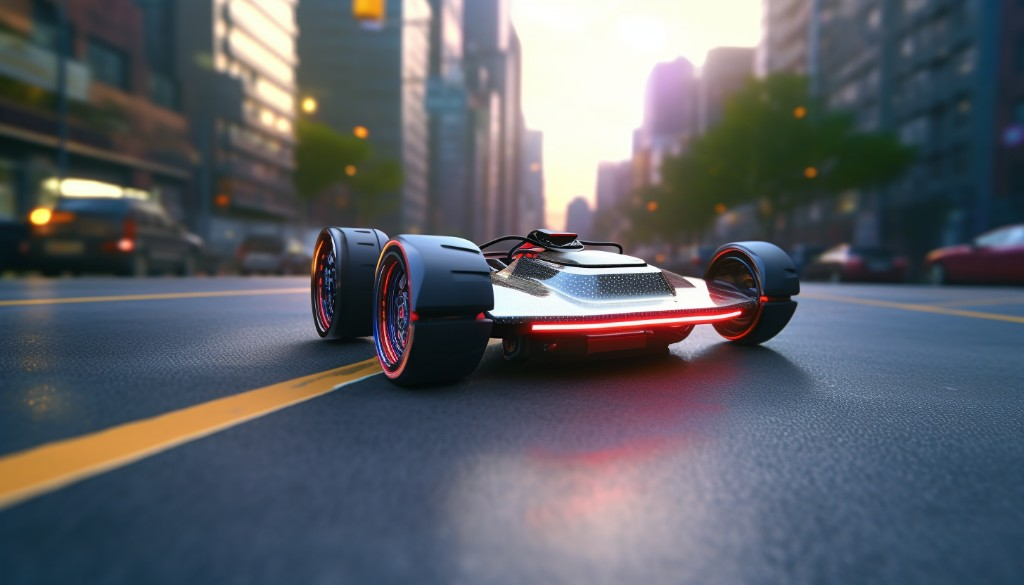
Battery Compatibility
Just as you wouldn’t put diesel in a gasoline car, you need to ensure that your motor is compatible with your battery. The voltage of your battery determines how much power can be delivered to your motor. Too little voltage and your motor will be underpowered; too much, and you risk damaging your motor.
For most electric skateboards, a 36V battery is standard. This offers a good balance between power and range, making it suitable for most riders. However, if you’re a heavier rider or frequently ride in hilly areas, you might want to consider a higher voltage battery.
When choosing a motor for an electric skateboard, check the manufacturer’s specifications for recommended voltage range. This will help ensure that your motor and battery are a perfect match.
When choosing a motor, consider factors like size, wheel compatibility, and battery compatibility, to find a motor that delivers the perfect balance of power, efficiency, and range for your riding style and terrain. Remember, it’s not about having the best motor, it’s about having the right one.

Closing Thoughts
Choosing an electric skateboard motor is not just about picking any motor but understanding what you’re getting into. You need to familiarize yourself with the various types of motors and their respective advantages and disadvantages. In addition, key motor specifications such as size and KV rating are crucial in determining the performance and power of your skateboard. By taking into account these aspects, along with other factors such as your personal needs and preferences, you can make an informed decision that will give you the best skateboarding experience. Remember, the right motor can make a huge difference in your ride – it’s worth spending the time to get it right.
Frequently Asked Questions
What are the different types of motors used in electric skateboards?
Electric skateboards commonly use two types of motors: hub drive motors and belt drive motors. Each type has its own set of advantages and disadvantages.
What factors should I consider when choosing a motor for my electric skateboard?
When choosing a motor for your electric skateboard, consider factors such as the type of motor, key motor specifications like size and KV rating, your personal needs and preferences, and the pros and cons of each option.
What is the difference between a hub drive motor and a belt drive motor?
A hub drive motor is integrated into the wheel of the skateboard, offering a sleek design and less maintenance. On the other hand, a belt drive motor uses a belt and pulley system to drive the wheels, providing more power and torque but requiring more maintenance.
How does the size of the motor affect the performance of an electric skateboard?
The size of the motor can greatly affect the performance of an electric skateboard. Larger motors generally provide more power and torque, making them ideal for climbing hills or carrying heavy riders.
What is a KV rating and why is it important when choosing a motor for an electric skateboard?
A KV rating refers to the number of revolutions per minute (RPM) that a motor will turn when one volt is applied with no load. It’s important when choosing a motor because it affects the speed and torque of your electric skateboard. Higher KV motors are faster but offer less torque, while lower KV motors have more torque but are slower.
